Table of contents
What is Pilates?

Pilates is a technique for physical exercises that was developed by the German Joseph Pilates, in the beginning of the 20th century and that has gained practitioners all over the world, including Brazil. In short, Pilates is a sum of exercises that can be done alone or with specific equipment that are characterized by the lack of high impact during the activity, unlike other physical activities.
It is a method that aims the education, awareness and balance of the body, making it suitable for both daily life and professional use. Its wide applicability is very wide, ranging from pre and post-operative to the physical conditioning of athletes.
In fact, that's why it became such a famous method and practiced by various audiences: elderly, children, pregnant women, athletes, etc. Continue reading and see in this article all about pilates.
Meaning of pilates
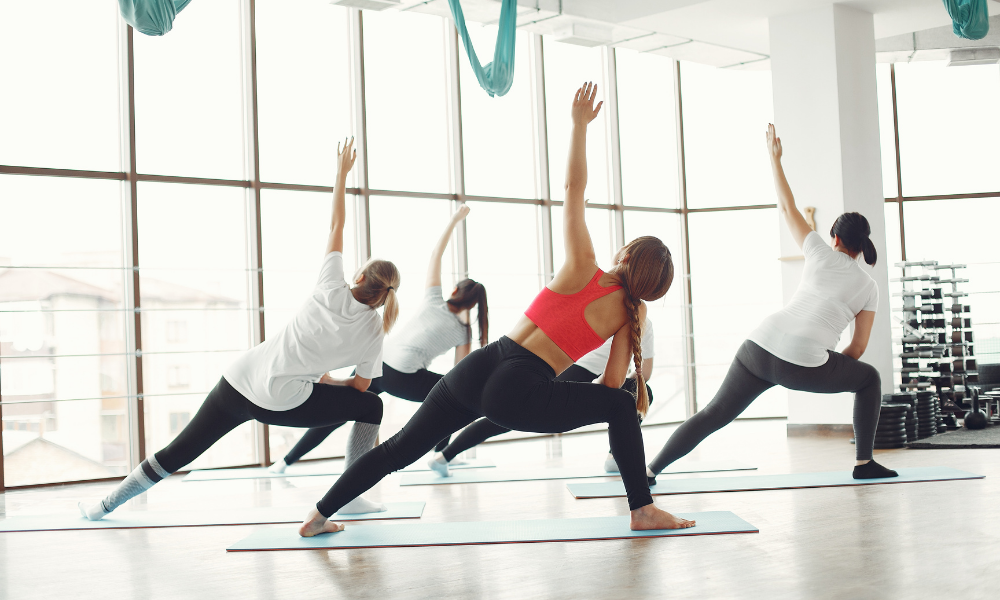
Pilates means a variation, strength and flexion training that helps to improve posture, stretch and tone muscles without exaggerating. In addition, it is a method that builds the movements, a body study in which unique apparatus is used and that through six key principles, connects the body and mind.
The meaning of Pilates is to improve the quality of life of those who practice it. Moreover, its practice aims to work the body's resistance, besides strengthening the muscles. Check below its origin and main objectives.
Origin of Pilates
At the age of 14, Joseph Pilates began to delve deeper into the area of anatomy, seeking knowledge in traditional Chinese medicine, among others. Through these studies he discovered different types of physical activities, such as weight training.
At the time, Joseph suffered from asthma, rickets and rheumatic fever, so he had the idea to create the pilates method to help patients in the same condition.
In addition, Joseph attributed the cause of his breathing problems to poor posture. In effect, he began working on his breathing and started exercising outdoors. Originally, Pilates was created under the name of Contrology, as it is equivalent to the control of the mind over all the limbs and muscles of the body.
Purpose of pilates
The main goal of Pilates is to work the stabilizers and mobilizers of the spine, through the objectives set for each patient.
In all exercises there is the work of the primary chain, which is defined as the activation of muscle groups such as: the transverse abdominis, the muscles located in the vertebral channels, the pelvic floor and the diaphragm.
In addition, since its popularization, pilates has gained fans of all ages who want an alternative to weight training and other aerobic training to exercise.
How Pilates works
Pilates acts in the control and correction of posture. Moreover, it is effective in the treatment for rehabilitation of people suffering from some diseases.
The poses and exercises of the method make practitioners maintain a neutral posture of the spine, minimizing unnecessary muscle movements, thus improving the stability of the body and preventing muscle fatigue.
The good posture is a habit that brings a physical, mental and social well-being to the human being, already the bad posture is a bad habit that must be modified with small daily attitudes, as for example, practicing pilates.
Who is Pilates for
People of all ages can do pilates. however, there are specific audiences that stand out for this practice, such as elderly with back problems, pregnant women as well as children and teenagers with bad posture. so, pilates is practiced according to the limit of each person, being its practice indicated for everyone.
Finally, it is used for any purpose or person, as a choice of physical activity for those who do not like walking, running and gym, and also for the rehabilitation of people with postural diseases.
Pilates professionals
Professionals who are able to offer pilates class must have done a Pilates Training Course, because they need to know when is the right time to advance the pace of training, always respecting the needs and individual abilities of each student.
According to the Class Councils of Physiotherapy and Physical Education Professionals, the professional, obligatorily, must have a good knowledge in anatomy, biomechanics and kinesiology to be able to give Pilates classes. Besides, Dancers and Occupational Therapists also teach Pilates.
How are the practices
The quality of the movements performed in Pilates allows the practitioner to be invigorated after practice. Pilates practices prioritize balance, without any muscle set is overloaded, making the body work more efficiently any movement, from daily activities to sports practice.
Pilates moves all areas of the body in isolation or grouped by applying the principles of movement and stability, always seeking muscular balance. Balance is established by the relationship between tone or strength and the length of muscles around a joint.
Does Pilates lose weight?
Pilates tones the muscles, increases flexibility and corrects posture. In addition, this practice prevents pain, improves endurance, increases strength and, when associated with a balanced diet and physical exercise, helps you lose weight.
This happens, because the movements of pilates promote firmness to the body, stabilize the joints and re-educate the movements as a whole. In addition, when you practice pilates, the whole body is in motion, occurring calorie burning and contributing to weight loss.
Benefits of Pilates
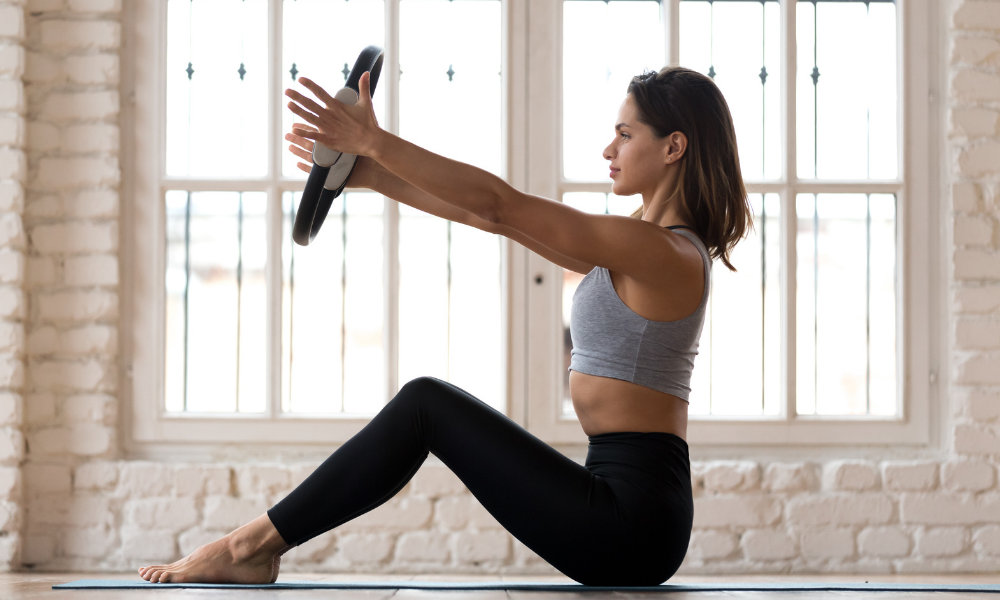
Pilates provides several benefits such as physical and mental resistance, increased flexibility, correction of posture problems, muscle toning, improvement of motor coordination and reduction of friction in the joints.
Moreover, the continuous practice promotes relief from muscle pain, aids in breathing, prevents osteoporosis, promotes relaxation and well-being, eliminates toxins and facilitates lymphatic drainage, reduces stress, helps in weight loss and restores balance throughout the body. See below in detail these benefits provided by pilates.
Posture improvement
Most non-structural postural defects are easy to correct once the causes of the problems have been found. Therefore, pilates instructors will guide postural forms to students, teaching them to maintain correct upright posture when standing, sitting and in other activities during everyday life.
Pilates acts with focus in the musculature, in the muscles of the center of the body, this makes with that the natural curves of the column are respected and corrected, improving the posture and preventing negative effects that can come to occur, that is, the pains in the backs.
More pleasure in sexual intercourse
The practice of pilates regulates the hormones that are linked to stress in the blood, the movements will release dopamine and serotonin, neurotransmitters responsible for the feeling of pleasure and well-being. In addition, pilates will work the muscles of the pelvic floor, where there is greater stimulation of pleasure during sex, especially for women.
In addition, Pilates facilitates the prolongation of orgasm. It also strengthens the inner and outer regions of the thighs, buttocks and calves, regions most worked in the sexual act.
Increased muscle tone
The Pilates movements cause the body's fibers to be broken down and rebuilt, facilitating the replacement of fat mass by muscle mass, which accentuates body contouring and reduces measurements.
The Pilates exercises perform the contraction and strength of the muscles, besides its flexibility. Besides generating a synchronized combination between strengthening, stretching and muscle toning, that is, stiffening and flexing the muscles, making them firm and outlined and, at the same time, relaxed.
Greater joint mobility
By doing the Pilates movements, the practitioner works the body in a total way, stimulating its joints. This makes the body movements have more flexibility on a daily basis.
In fact, the central point of our body is the spine, that is, it is there where you feel the difference when you lose mobility, making movements more difficult to perform or even with a lot of pain.
To improve or establish this mobility, physical exercise is essential, especially pilates exercises, because it is a modality that gives more attention to the spine.
Evolution of walking and running
Global movements are stimulated during pilates exercises, making common movements like walking simpler and better executed.
However, when the gait impairs some joint or is suffering dysfunction due to some disease, or even changing due to the aging process, it is necessary to start a re-education, to correct the abnormalities in the patterns.
In addition, Pilates provides the appropriate exercises with equipment, which can assist in the improvement of gait.
Stress Relief
Pilates brings relief from tensions through techniques such as breathing control and concentration in the performance of the movement. Thus, during the practice, gradually the body goes into a relaxation process.
Still in relation to the relief of tensions, the practice of pilates also stabilizes the scapular waist, because when they are not relaxed they can overload the muscles of the neck and shoulders. The relief is even greater when the exercises take place in a calm environment, with soft and pleasant music.
Focus on breathing
The proper breathing is developed when practicing pilates. This is because, breathing correctly during the exercises, improves several aspects of the body's health in general. Thus, according to the exercise, the breathing should be done correctly so that the movements can bring all the benefits proposed by pilates.
The way we breathe has a direct influence on our quality of life. When we breathe well, we can become calmer, slow down the pace and improve concentration. In addition, when breathing is normal, it is possible to oxygenate the brain easily and thus obtain better results in daily activities.
Increased flexibility
Pilates exercises aimed at this benefit are those that are focused on stretching the body. Pilates works all parts of the body and increases your flexibility, endurance and strength.
By the way, flexibility is also a very important element for good muscular performance, because it develops body awareness, allied with posture, according to the stretches done in the various parts of the body.
In effect, Pilates helps to release movements blocked by emotional tension by stimulating spontaneous and flexible movements.
Types of pilates
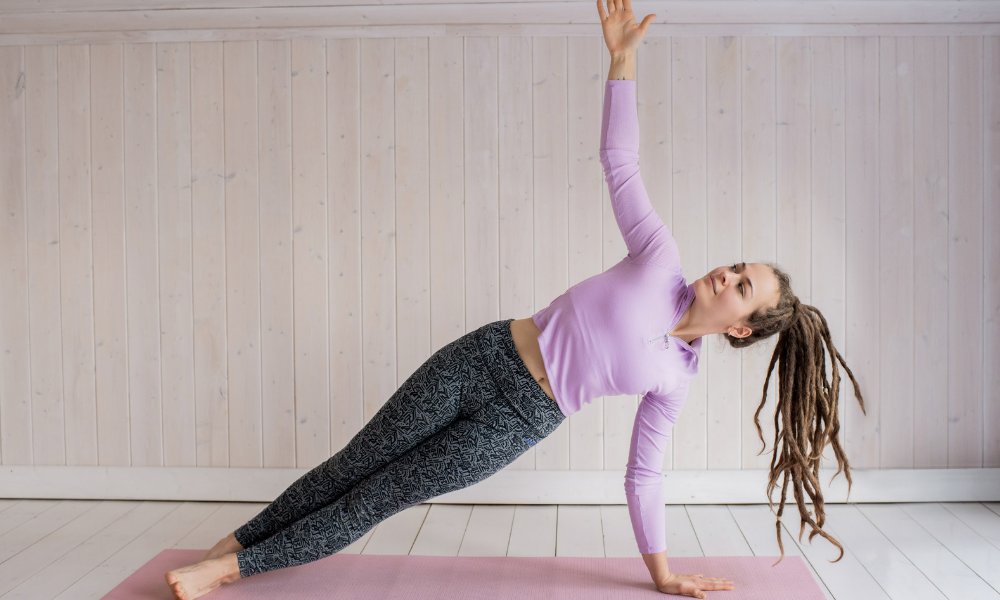
Pilates can be practiced on the ground without the aid of any equipment, becoming a low-cost alternative for those who want to start in the technique.
Despite this, there is a discipline in the execution of movements, so it's important that beginners are monitored by a professional so that not only get better results, but also not hurt themselves by practicing incorrectly. To learn more, check out below the two types of pilates.
Pilates with equipment
In pilates with apparatus different colored springs are used which include black, red, green, blue and yellow, in descending order of intensity.
The pilates devices are composed by these springs, that can be used in two different ways: reducing the effort of the practitioner facilitating the movement or carrying part of the weight that should be pulled, making the movement difficult.
The choice of how to use these springs will depend on your goals, giving the possibility to soften or intensify the movement.
Pilates solo
Floor pilates is performed with the use of the body itself or various accessories at the time it is performed. Because it is practiced without the need for equipment, this modality offers a greater diversity of challenges to the method.
In solo pilates, the original exercises were developed by the father of pilates himself, Joseph Pilates. He elaborated and performed these exercises on his own body without using any accessories. Some exercises performed in solo pilates are of educational models, that is, they were elaborated for the learning of the breathing and of the strength center.
Pilates equipment
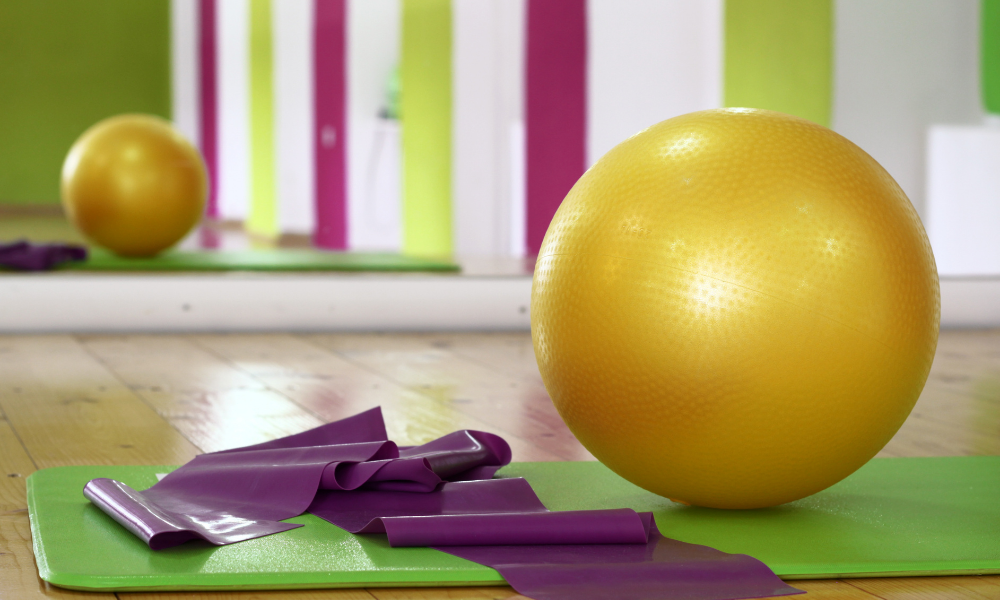
The apparatus used in the practice was designed by Joseph Pilates to make sure that people could move their bodies and, at the same time, improve their posture. According to Joseph, by exercising with an external load, human movement becomes more efficient and harmonious in its usual condition.⠀
Thus, most of the devices have springs that have the function of allowing the intensification or reduction of effort. Learn more about each of these devices.
Cadillac
This device was named Cadillac after a car of the time when Joseph Pilates lived. This car was very successful. For Joseph, this device was luxurious and innovative, just like the Cadillac.
Besides that, it helps patients with locomotion difficulties, facilitating the movement for those people who cannot perform the classic floor exercises. Therefore, it is a large device that has several types of functions and possibilities of exercises in different positions, such as lying down, sitting, kneeling, standing and also suspended.
Ladder Barrel
Its appearance is that of a barrel with a ladder and was inspired by a beer barrel. Because it has this rounded shape, it allows you to mobilize the spine so that it lifts to the maximum, making abdominal exercises even more difficult, which is great for keeping the spine aligned and healthy.
Because it makes the exercises more difficult, this device does not use springs. In fact, it has one particularity in relation to the others. Currently, it is widely used for rehabilitation and postural treatments, but it can also be used to improve physical conditioning.
Step Chair
The Step Chair was created based on the model of a wheelchair, but Joseph put a mobile pedal with two springs for resistance, has backrest and hand straps.
The size of the Step Chair is smaller in relation to the other devices, and it does not have many accessories, that is, it only has pedals and parallel bars. To use it you need a lot of strength in the arms, because it requires a greater effort to perform the exercises.
Swiss Ball
The ball originated in Switzerland and began to be used there as an accessory to assist in pilates exercises, being used for physical rehabilitation and kinesiology movements. Thus, it became known throughout the world as the Swiss ball.
The ball is one of the most used accessories in the solo pilates activities. It is an accessory that helps prevent injuries, gain more muscle strength, increase flexibility, besides improving breathing, bringing many benefits.
Reformer
Joseph created the Reformer with the aim of reforming the body as a whole. It has a small bed with wheels and a rail by which slides this cart. The Reformer is composed of a mobile part on rails that uses the resistance of four springs with the same tension.
In addition to providing stability, this device offers a wide range of exercises, making it possible to perform various movements, according to the needs of the practitioner.
Elastic band
The elastic band appeared in Russia and is an accessory used in various movements of pilates. It was created for the training of athletes in rehabilitation, as well as for joint and muscle recovery. In pilates exercises the elastic band provides improved flexibility, tones and strengthens the whole body, besides working the balance, making joint mobilization.
The elastic band stands out for its colors: red, purple and blue that are used according to each tension. Its objective is to work power and strength and the intermediate and strong intensities.
Magic circle
A classic accessory of pilates, the magic circle was also invented by Joseph in order to be accessible to the method, because it can be used in different environments. It consists of a flexible ring with approximately 40 cm in diameter, used, among other purposes, to increase the pilates activity.
The Magic Circle is the only original accessory that is still manufactured in large scale and widely used in pilates classes. Moreover, it has also become very popular in the fitness world and today is used not only in pilates studios, but also in gyms and rehabilitation clinics.
Bosu
The bosu is a functional platform that aims to improve physical condition in cardio, strength and flexibility exercises. Because it is a very versatile piece of equipment, it helps in the training and alignment of the gravity axis.
It can provide the improvement of body awareness, motor coordination, balance, neuromuscular efficiency. In pilates exercises, the Bosu is used to perform the exercises normally done on the Swiss ball, but in a safe and comfortable way.
Tonning balls
Toning balls are small balls that weigh from 0.5 kg to 6 kg. They are used in pilates classes, making the exercises more challenging. In addition, they bring more firmness to the stability of the shoulders and other muscle groups.
These balls are used to roll, providing an excellent stretching work. Its main feature is the weight they have, adding to the workload an open kinetic chain, stimulating the person in performing the movements.
Foam Roller
The foam roller is a pilates accessory used to support the body, helping in various types of work, such as stretching, massage, balance and strength and endurance exercises. The foam roller material promotes an unstable surface, which contributes to the strengthening of the core.
As for density, the harder it is, the greater the application for myofascial release. On the other hand, the more pliable it is, the better for gentler relaxations.
Great allies of pilates
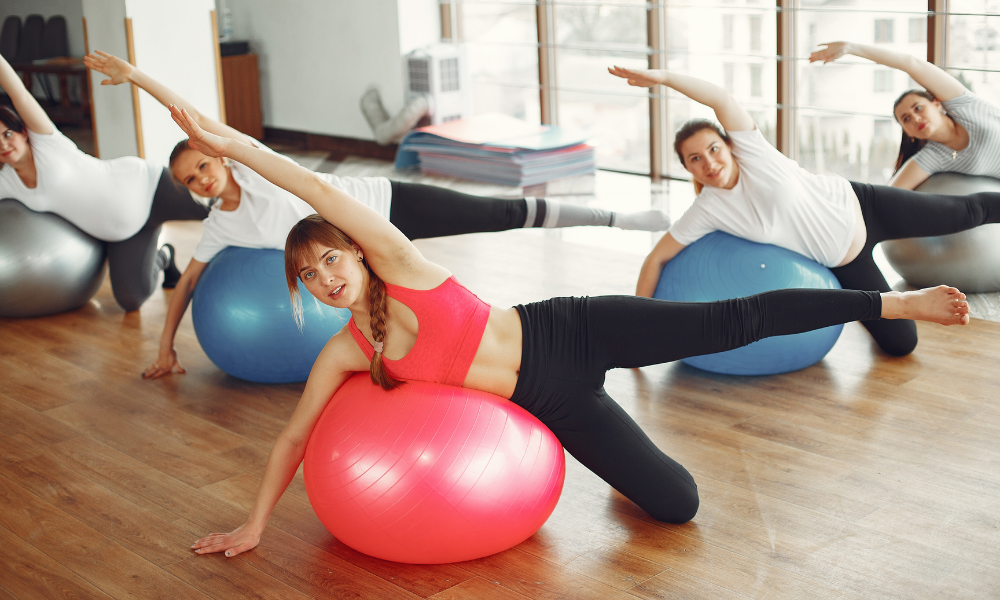
Physical exercises bring countless benefits for those who practice them, so Pilates associated with a healthy and balanced diet, can help improve the quality of life, well-being and health.
In this sense, Crossfit has become a great ally of pilates in association with strength, flexibility and posture, contributing to the body balance and motor coordination. Learn more about the allies of pilates, below.
Healthy habits
Some healthy habits, when adopted in parallel to Pilates, such as walking, sports and other types of physical exercise, make the practice even more effective. In addition, a skin care routine, yoga practice and meditation are also good examples of healthy habits.
But, for a good functioning of the body, it is also necessary to get rid of bad habits and harmful to health such as smoking and drinking alcoholic beverages in excess. Another tip is to drink plenty of water and sleep at least 8 hours a day to maintain a balanced routine.
Crossfit
In recent years, Pilates has been emerging as a great ally of Crossfit practitioners who seek the modality to help in the prevention of injuries and to work aspects of breathing. Moreover, Pilates is a reference in the correction of posture, an important point for the correct realization of the workouts in Crossfit.
Finally, Crossfit requires the student to acquire good flexibility and body awareness and with Pilates, he can develop more balance and joint mobility.
Aerobic exercises
Aerobic exercises require people to exercise weight training, to provide benefits to the major muscle groups. In addition, they help prevent cardiovascular diseases and disorders produced by stress. The main and fundamental role of aerobic training is to reduce weight and burn body fat.
This way, Pilates is that perfect resistance exercise, but to find the ideal balance it would be great to associate it with some aerobic exercise. But, it's worth remembering that Pilates doesn't replace aerobic activities, and only the practice of these combined activities promotes greater benefits to the body.
Does pilates have any contraindications?
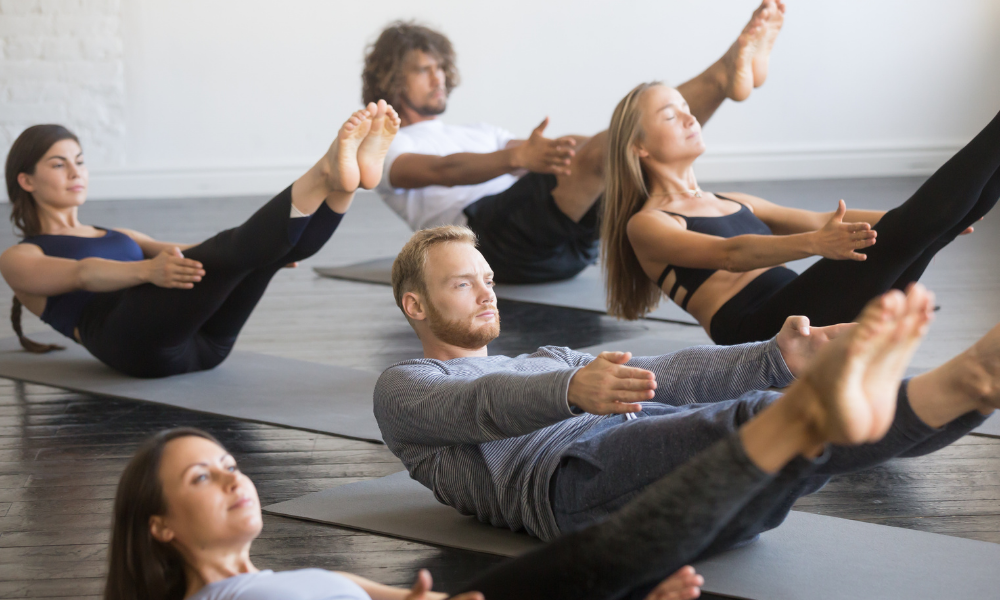
Because it is exercise that can be practiced by anyone, with any conditioning or in any age group, Pilates has no contraindications.
However, it is necessary to have certain cares as not to make pilates exercises without professional orientation, or to practice the modality in agitated places, that can difficult the concentration and the full performance of the practice.

